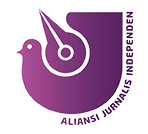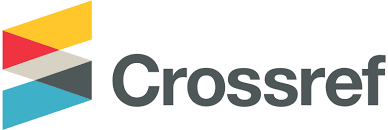Community Radio Research Trends in Communication Science: A Co-Authorship Bibliometric Analysis
Abstract
Keywords
Full Text:
PDFReferences
Aminuddin, A. T., & Hasfi, N. (2020). Konvergensi media surat kabar harian lokal Jateng Pos. Jurnal Kajian Jurnalisme, 3(2), 137–152. https://doi.org/10.24198/jkj.v3i2.25070
Baharuddin, T., Nurmandi, A., Qodir, Z., Jubba, H., & Syamsurrijal, M. (2022). Bibliometric analysis of socio-political research on capital relocation: Examining contributions to the case of Indonesia. Journal of Local Government Issues, 5(1), 17–31. https://doi.org/10.22219/logos.v5i1.19468
Ball, R. (2017). An introduction to bibliometrics: New developments and trends. In An Introduction to Bibliometrics: New Development and Trends. https://doi.org/10.1016/C2016-0-03695-1
Cherappurath, N., Shamshadali, P., Elayaraja, M., & KI, D. A. K. (2024). Mapping the field: A bibliometric analysis of women’s football research trends and future directions. Apunts Sports Medicine, 59(223), 100448. https://doi.org/10.1016/j.apunsm.2024.100448
Dominica, L., Fauziah, L., & Pramesti, A. I. (2021). Proses pendirian radio komunitas suara edukasi oleh Universitas Muhammadiyah Yogyakarta di Kulon Progo di masa pandemi COVID-19. Jurnal Audiens, 2(2), 261–272. https://doi.org/10.18196/jas.v2i2.11800
González-Alcaide, G. (2021). Bibliometric studies outside the information science and library science field: Uncontainable or uncontrollable? Scientometrics, 126(8), 6837–6870. https://doi.org/10.1007/s11192-021-04061-3
Hamidah, I., Sriyono, S., & Hudha, M. N. (2020). A bibliometric analysis of COVID-19 research using VOSviewer. Indonesian Journal of Science and Technology, 5(2), 209–216. https://doi.org/10.17509/ijost.v5i2.24522
Horta, H., & Santos, J. M. (2016). The impact of publishing during PhD studies on career research publication, visibility, and collaborations. Research in Higher Education, 57(1), 28–50. https://doi.org/10.1007/s11162-015-9380-0
Husna, J., Ratna, M. P., & Nasir, N. E. C. (2024). Analisis bibliometrik Kiryoku: Jurnal studi kejepangan tahun 2017-2021. Anuva: Jurnal Kajian Budaya, Perpustakaan, dan Informasi, 8(2), 209–226. https://doi.org/10.14710/elipsoida.%Y.22516
Karim, A. (2022). Analisis bibliometrik menggunakan Vosviewer terhadap trend riset matematika terapan di Google Scholar. Jurnal Riset Pendidikan Matematika Jakarta, 3(2), 23–33. https://doi.org/10.21009/jrpmj.v3i2.22264
Kasemodel, M. G. C., Makishi, F., Souza, R. C., & Silva, V. L. (2016). Following the trail of crumbs: A bibliometric study on consumer behavior in the Food Science and Technology field. International Journal of Food Studies, 5(1), 73–83. https://doi.org/10.7455/ijfs/5.1.2016.a7
Kuhn, T. (2020). The structure of scientific revolutions. In Knowledge and Postmodernism in Historical Perspective. https://doi.org/10.2307/2090620
Kulczycki, E., Engels, T. C. E., Pölönen, J., Bruun, K., Dušková, M., Guns, R., Nowotniak, R., Petr, M., Sivertsen, G., Istenič Starčič, A., & Zuccala, A. (2018). Publication patterns in the social sciences and humanities: Evidence from eight European countries. Scientometrics, 116(1), 463–486. https://doi.org/10.1007/s11192-018-2711-0
Larson, M. K., George, R. J., & S., A. P. (2023). Bibliometric analysis for medical research. Indian Journal of Psychological Medicine, 45(3), 277–282. https://doi.org/10.1177/02537176221103617
Nafi’ah, B. A., Roziqin, A., Suhermanto, D. F., & Fajrina, A. N. (2021). The policy studies journal: A bibliometric and mapping study from 2015-2020. Library Philosophy and Practice, 5881. https://digitalcommons.unl.edu/libphilprac/5881/
Pajić, D., Jevremov, T., & Škorić, M. (2019). Publication and Citation Patterns in the Social Sciences and Humanities: A National Perspective. Canadian Journal of Sociology, 44(1), 67–94. https://doi.org/10.29173/cjs29214
Priyana, Y., Karyono, S. M., & Pranajaya, S. A. (2024). Analisis jaringan kolaborasi penelitian dalam kesehatan mental: Pendekatan bibliometrik. Jurnal Psikologi dan Konseling West Science, 2(01), 23–31. https://doi.org/10.58812/jpkws.v2i01.1056
Rafika, A. S., Putri, H. Y., & Widiarti, F. D. (2017). Analisis mesin pencarian Google Scholar sebagai sumber baru untuk kutipan. Journal CERITA, 3(2), 193–205. https://doi.org/10.33050/cerita.v3i2.657
Rogers, E. M., Singhal, A., & Quinlan, M. M. (2019). Diffusion of innovations 1. In An Integrated Approach to Communication Theory and Research (pp. 415–434). Routledge. https://doi.org/10.4324/9780203710753-35
Schaefer, S. J. (2022). Global Englishes and the semiotics of German radio—encouraging the listener’s visual imagination through translingual and transmodal practices. Frontiers in Communication, 7. https://doi.org/10.3389/fcomm.2022.780195
Setyawan, B. (2021). Potential of a public information commission based on public information disclosure principles to improve state public services. Yuridika, 36(3), 535–548. https://doi.org/10.20473/ydk.v36i3.30382
Suber, P. (2016). Removing the barriers to research: An introduction to open access for librarians. In Knowledge Unbound (pp. 43–50). The MIT Press. https://doi.org/10.7551/mitpress/8479.003.0008
Sugiana, D., & Setiaman, A. (2019). Kompetisi media radio di era radio digital. In Komunikasi dalam Media digital (pp. 1–15). Buku Litera.
Syafiq, M., Dewantara, M. I., & Jabbar, H. Al. (2019). Strategi komunikasi penyiar radio Perkasa FM Tulungagung dalam program Warna-Warni Perkasa. Wasilatuna, 02(2), 1–16. https://doi.org/10.35308/source.v7i2.3664
Thelwall, M., Kousha, K., Abdoli, M., Stuart, E., Makita, M., Wilson, P., & Levitt, J. (2023). Why are coauthored academic articles more cited: Higher quality or larger audience? Journal of the Association for Information Science and Technology, 74(7), 791–810. https://doi.org/10.1002/asi.24755
van Eck, N. J., & Waltman, L. (2014). Visualizing bibliometric networks. In Measuring Scholarly Impact (pp. 285–320). Springer International Publishing. https://doi.org/10.1007/978-3-319-10377-8_13
Wallin, J. A. (2005). Bibliometric methods: Pitfalls and possibilities. In Basic and Clinical Pharmacology and Toxicology (Vol. 97, Issue 5, pp. 261–275). https://doi.org/10.1111/j.1742-7843.2005.pto_139.x
Wellman, B. (1983). Network analysis: Some basic principles. Sociological Theory, 1, 155. https://doi.org/10.2307/202050
Wiener, M., Saunders, C., Chatterjee, S., Dennis, A. R., Gregor, S., Mähring, M., & Mertens, P. (2018). Information systems research: Making an impact in a publish-or-perish world. Communications of the Association for Information Systems, 43(1), 466–481. https://doi.org/10.17705/1CAIS.04326
Zakiyyah, F. N., Winoto, Y., & Rohanda, R. (2022). Pemetaan bibliometrik terhadap perkembangan penelitian arsitektur informasi pada Google Scholar menggunakan VOSviewer. Informatio: Journal of Library and Information Science, 2(1), 43–60. https://doi.org/10.24198/inf.v2i1.37766
Zupic, I., & Čater, T. (2015). Bibliometric methods in management and organization. Organizational Research Methods, 18(3), 429–472. https://doi.org/10.1177/1094428114562629
DOI: https://doi.org/10.24198/jkj.v8i2.55978
Refbacks
- There are currently no refbacks.
Copyright (c) 2025 The Author(s)

This work is licensed under a Creative Commons Attribution-NonCommercial-ShareAlike 4.0 International License.
Kajian Jurnalisme Indexed by:
Editorial Office of Kajian Jurnalisme:
Journalism Study Program, Faculty of Communication Sciences, Universitas Padjadjaran
Building 3 2nd Floor, Jl. Raya Bandung Sumedang KM.21, Jatinangor, Sumedang Regency, West Java 45363
Email: kajian.jurnalisme.fikom@unpad.ac.id
Telepon: (022) 7796954
Faks: (022) 7794122
Kajian Jurnalisme Supervised by:













